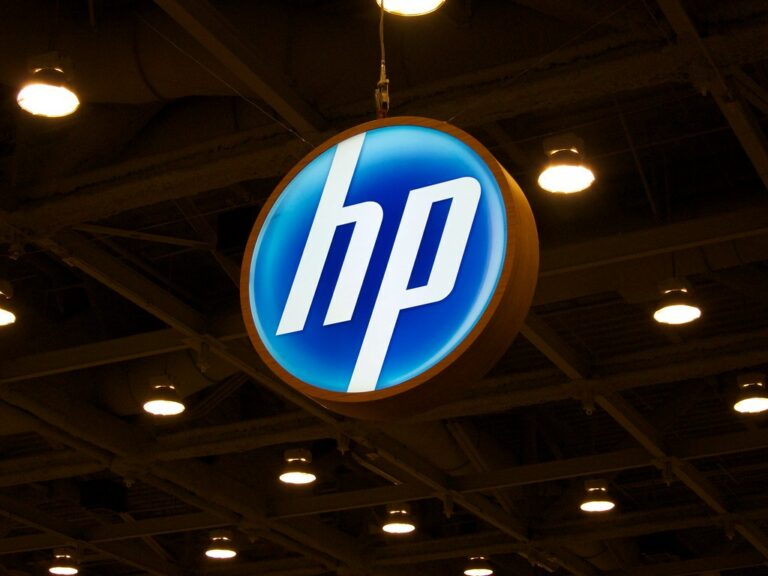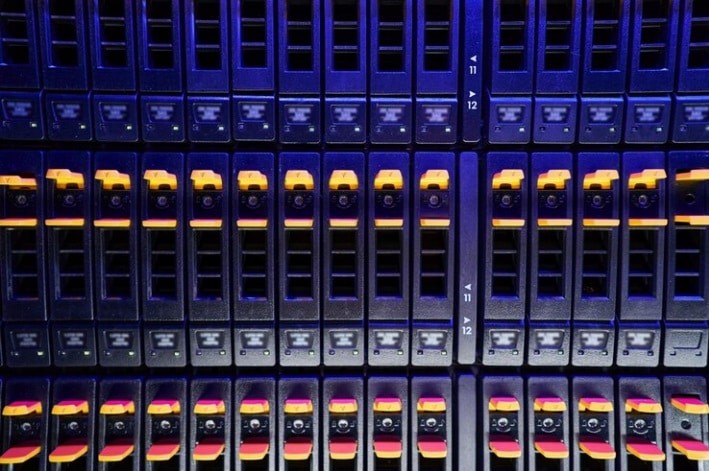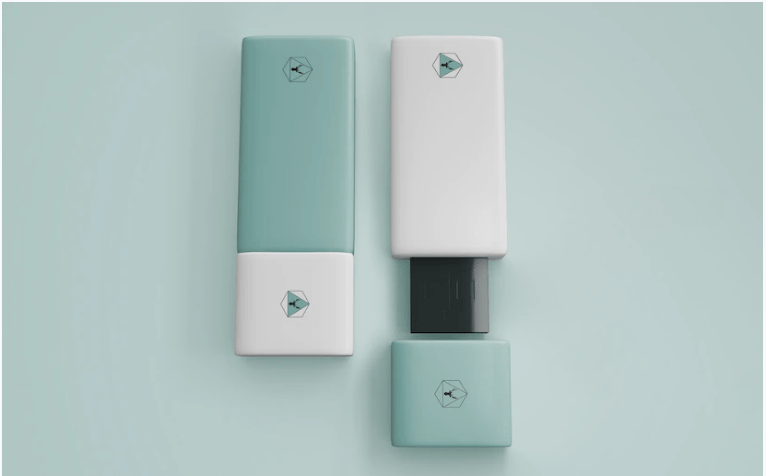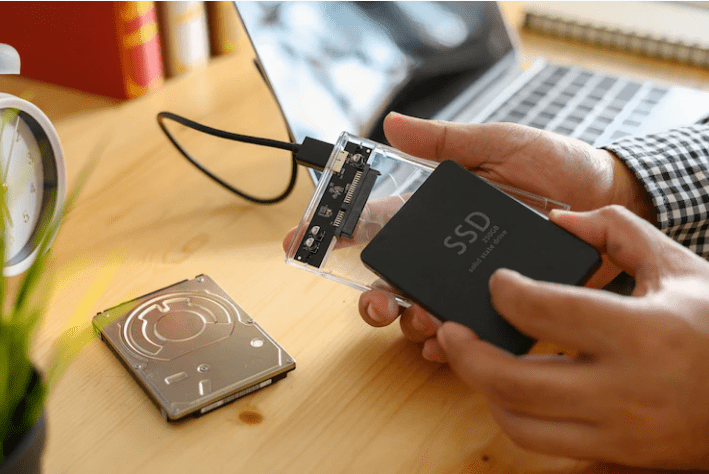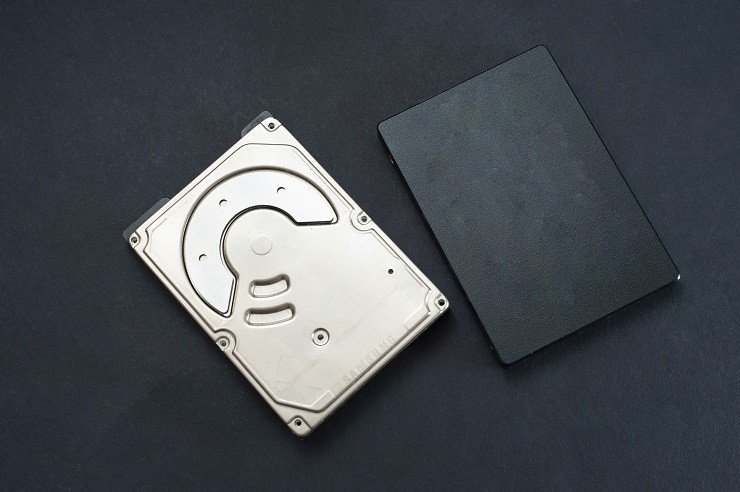5) High Performance Phase Change Memory/NAND Hybrid Solid State Storage.
Phase change memory (PCM) shows promise as an alternative to standard NAND (flash) memory used in solid state drives (SSDs). It uses a chalcogenide alloy in two physical states – crystalline and amorphous. Since the resistance of the alloy in the two states is different, this property can be used to store binary information. The physical state can be switched by applying heat, and as both states are stable they persist until they are actively changed.
State changes can be performed on a cell (and therefore data written) about a million times, which compares favorably with the typical 30,000 write cycles offered by high-end SLC NAND cells found in enterprise class SSDs.
The problem with PCM is that it has a high write latency, but IBM has demonstrated that a hybrid device that uses PCM, NAND and DRAM on a single controller can work up to 275 times faster than a standard SSD device. This offers read times of between 100 and 300 nanoseconds, and write times of between 10 and 150 microseconds.
IBM expects that storage products based on this hybrid PCM technology will be available in 2016.
6) New Generations Of Linear Tape -Open
First introduced in 2000, the current generation of LTO tape technology, LTO-6, offers 6.25TB capacity, assuming a compression ratio of 2.5:1, and costs about 1.3c per gigabyte or less. The next two generations will offer 16TB and 32TB respectively when they are introduced in the next few years.
In September 2014 the LTO Program Technology Provider Companies – HP, IBM and Quantum – announced an extended roadmap with two new generations of LTO tape: generations 9 and 10, with compressed capacities of 62.5TB and 120TB respectively. Transfer rates are expected to increase to rates of up to 1,770MB/s for generation 9 and 2,750 for generation 10.
As with all LTO standards the new generations will include read-and-write backwards compatibility with the prior generation as well as read compatibility with cartridges from two generations prior.
LTO-6 was introduced in 2012 and new generations of LTO tapes are introduced about every two to three years, so LTO-10 is likely to be available in about 2021.
Longer term:
7) IBM 154TB Tape
In May 2014 IBM and Fujifilm announced a new record in areal data density of 85.9 billion bits per square inch on cost-efficient linear magnetic particulate tape. With that areal density, it should be possible to make an LTO-style cartridge that can store up to 154TB of uncompressed data, which is 62 times more than LTO-6 cartridges. The technology could be commercially viable in about ten years’ time.
To achieve this high areal density Fujifilm has developed what it calls Nanocubic technology, which decreases the volume of individual Barium Ferrite (BaFe) magnetic particles without degrading their thermal stability. Low volume particles are essential for high areal density, while thermal stability is needed to ensure the long term storage capabilities of the tape.
BaFe storage has been shown to be reliable for up to thirty years in Fujifilm trials, and BaFe is also not subject to deterioration from oxidization since the particles are already oxides.
For its part, IBM has developed an enhanced write field head that can be used with the lower volume BaFe particles, and an advanced head positioning system that enables a track density 27 times higher than the current LTO-6 format.
8) Genetic Storage
Scientists routinely sequence woolly mammoth DNA that has been kept cold for thousands of years, so there’s no question that the storage medium can last a long time. And scientists in the UK demonstrated last year how DNA can be used to store archive data that can be read back with 100% accuracy.
The DNA molecule is also a very dense storage medium, so one gram of DNA may be able to hold 2000TB of data.
At the moment DNA synthesis is far too expensive to use DNA data storage commercially, but in the future it could be viable for long term archiving of government data and other information that needs to be archived long term for regulatory compliance purposes.


